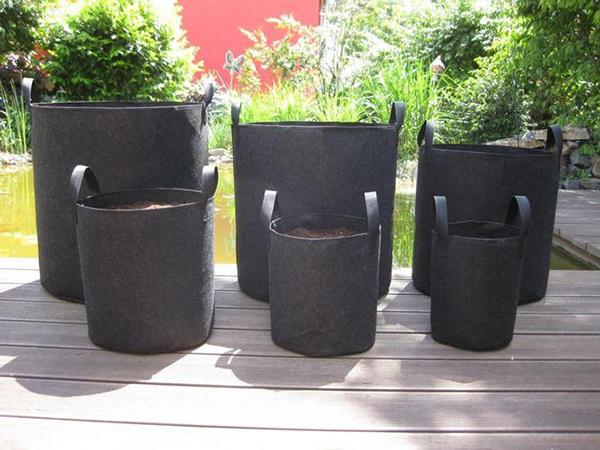I. Analysis of Challenges in PLA Fiber Applications
PLA fiber offers numerous unique advantages, but certain challenges arise in its practical applications. For instance, pure PLA nonwoven fabrics used in sanitary products have limited softness; pure PLA yarn in apparel fabrics feels stiff with a noticeable plastic texture; and PLA fiber used in packaging materials is prone to scratching and linting. When used alone, PLA fiber can feel stiff and lacks versatility, failing to meet the needs of finished products. Additionally, the current high cost of PLA fiber hinders its broader adoption.
These challenges can be addressed by blending PLA fiber with natural or cellulose fibers, which allows for complementary strengths.
However, eSUN's research and testing reveal additional challenges when blending PLA fiber with natural and cellulose fibers. These include issues with carding in the blending process, a decrease in functionality post-blending, and issues with maintaining hydrophilic, water-resistant, and hydrophobic properties in nonwoven fabrics. Additionally, balancing strength and softness in nonwoven fabrics presents further obstacles.
Addressing these technological challenges is essential for industry development. Through continuous research, eSUN has identified the following measures to effectively resolve issues encountered when blending PLA fibers with natural and cellulose fibers:
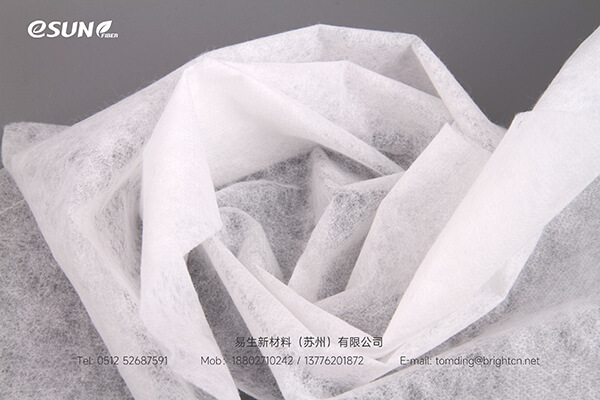
1.By matching suitable fiber fineness, length, crimp, and friction properties, smooth carding is ensured, avoiding bonding and fly generation. This enables carding speeds comparable to conventional levels.
2.By adjusting polymerization levels and modifying materials, the functional properties of blended nonwoven and fabric products can be retained at certain ratios, maintaining antimicrobial, anti-mite, and deodorant properties post-blending.
3.Through material modification, oil agent formulation, and post-processing, blended nonwoven fabrics achieve the required hydrophilicity, water repellency, and hydrophobic properties.
4.By selecting specific PLA fiber types, adjusting content levels, and modifying nonwoven processing techniques, a balance between strength and softness in nonwoven fabrics is achieved, meeting usage requirements.
II. Innovative Applications of eSUN's PLA Fibers
1.Sanitary material series/Anti-bacterial spunlace
Blended with viscose fibers to reduce costs while maintaining antibacterial, anti-mite, and deodorizing properties.
PLA fibers have strong moisture conductivity, keeping surfaces dry and breathable, and enabling rapid diffusion and unidirectional moisture transfer.
Lightweight, non-flammable, easy to decompose, non-toxic, non-irritant, and biodegradable.
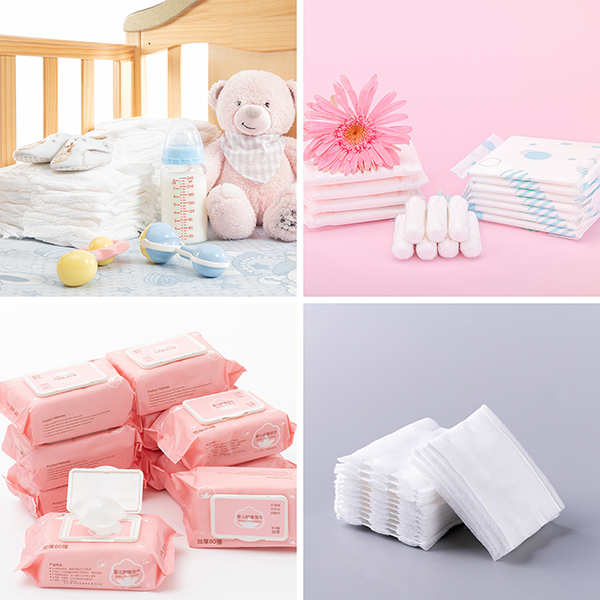
2. Packaging Series / Ultrasonic Bonded Spunlace Nonwoven Fabric
Bamboo fiber nonwoven fabric is hand-sewn; after blending with PLA, it can undergo ultrasonic bonding.
Reduces raw material and labor costs.
Bonding process prevents shedding and linting, maintaining product aesthetics and ensuring good softness and strength.
Environmentally friendly, biodegradable, and supports a low-carbon lifestyle.

3. Apparel Series / Wearable PLA Fiber
Blended with viscose to increase flexibility and comfort.
Slight acidity inhibits inflammation, softens keratin, and renews skin, improving skin micro-ecology and providing cosmetic benefits.
Biocompatible, slightly acidic, antimicrobial, skin-friendly, and hypoallergenic.
Low thermal conductivity for warmth.
High moisture conductivity for vapor permeability, rapid drying, and improved moisture absorption in regenerated cellulose fibers.
Blended with cotton, linen, silk, and wool, providing structure, antimicrobial properties, and reducing silk and wool costs.
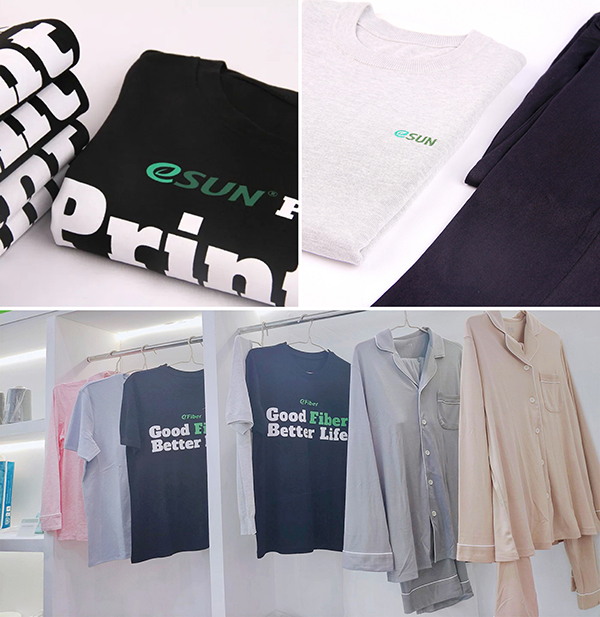
4.Filling Series / PLA 3D Crimped Fiber
Spring-like 3D crimped fiber with high resilience and loft.
Natural mild acidity aids in antibacterial and anti-mite protection.
Self-extinguishes away from flame, enhancing safety.
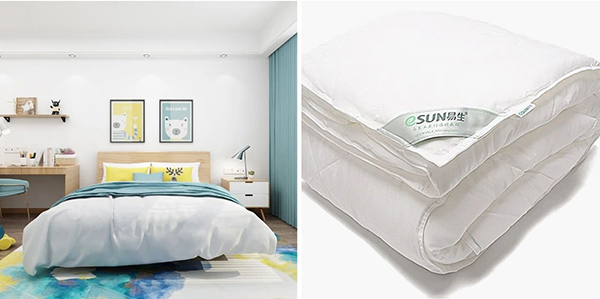
5.Comprehensive Home Solutions
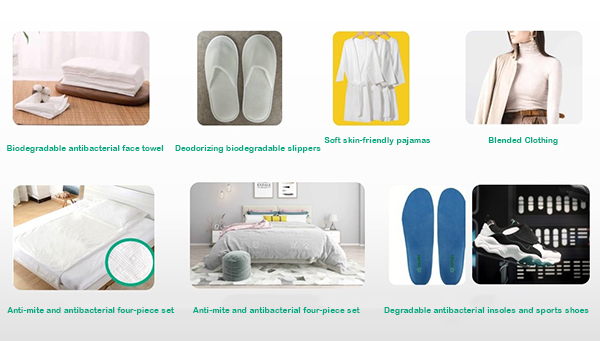
Developing bio-based fibers supports the accelerated green transformation of the textile industry. To date, Esun has established a closed-loop technological platform for PLA fiber. Upstream, Esun has built a 5,000-ton-per-year lactide synthesis facility in Xiaogan, Hubei, where both lactic acid and recycled PLA serve as lactide production materials. Downstream, eSUN Fiber uses lactide to produce PLA fiber. This vertical integration of the supply chain creates both technical and operational synergies.
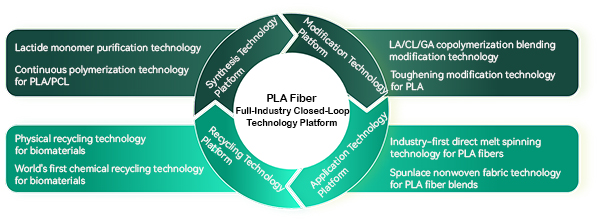
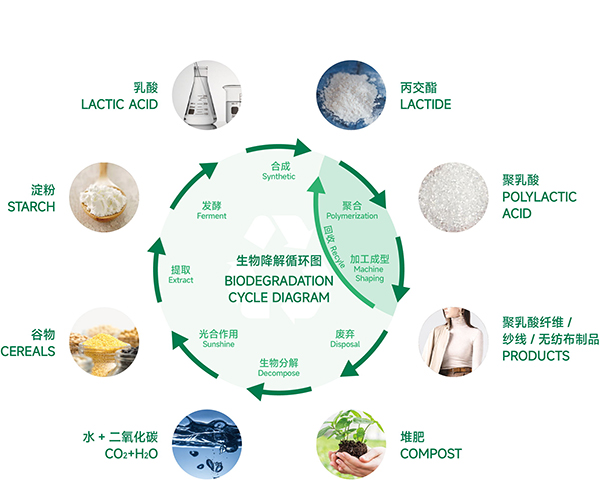
Whether in the 3D printing industry or the field of eco-friendly fibers, PLA materials exhibit promising development prospects. eSUN will continue collaborating with supply chain partners to further drive technological and application innovations in PLA and other bio-based materials, contributing to low-carbon innovation and high-quality industry development.











